Thursday night was the figure 8 demolition derby. I’d never been able to see a figure 8 derby, but my schedule finally allowed me to get to this year’s derby to see what it was all about.
As it turns out, the figure 8 derby is substantially different from the regular derby. The point of the regular derby is to be the last car running, and the method of removing other cars from the running is repeatedly smashing into them until they stop running (and hoping your car doesn’t give out because of it). On the other hand, the figure 8 derby is a race. It’s a full-contact race, but it’s primarily a race. The cars drive in a figure 8 pattern around two large tires for 12 laps. The first car to complete 12 laps wins. There were far fewer collisions in the middle of the 8 than I expected; most of the contact occurs around the turns. It’s highly entertaining, but in a different way than the regular derby. It certainly seemed faster paced!
Here’s one of the tires marking one of the turns:
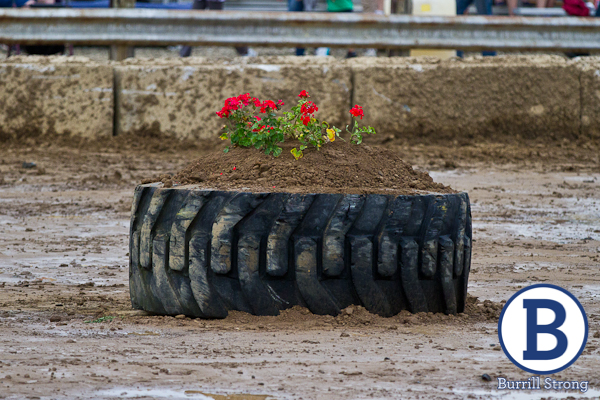
The figure 8 derby uses smaller cars than does the regular derby.
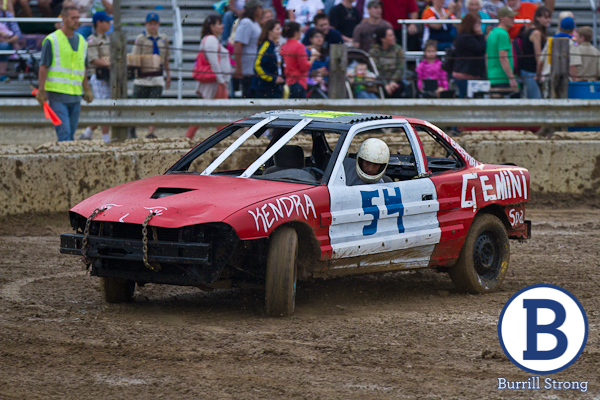
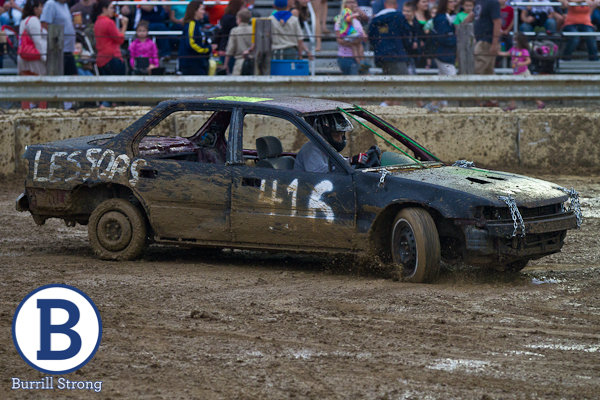
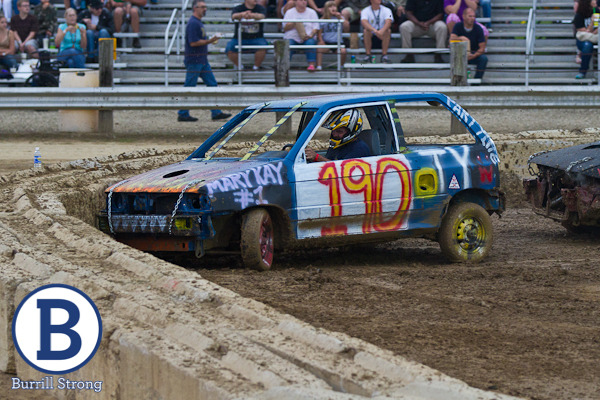
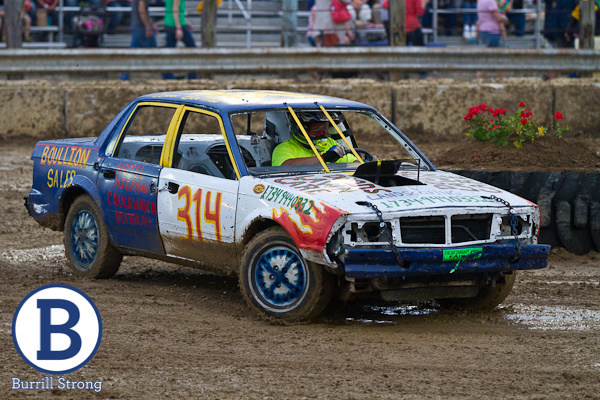
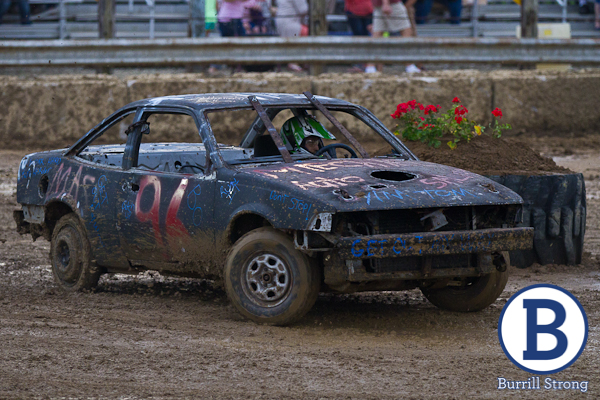
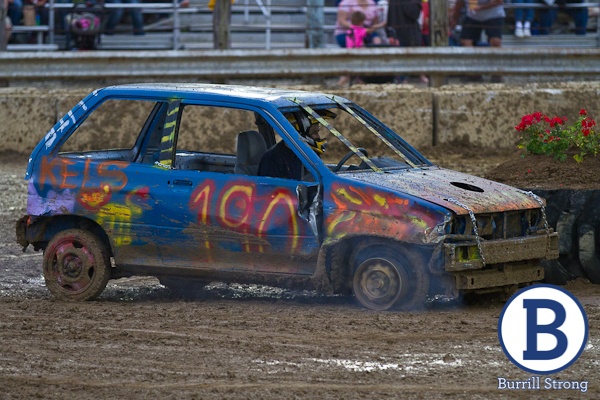
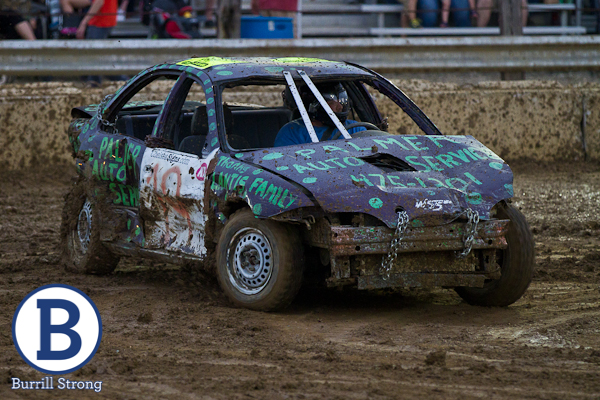
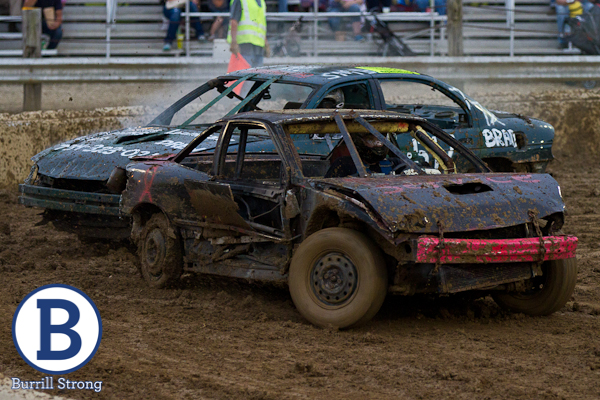
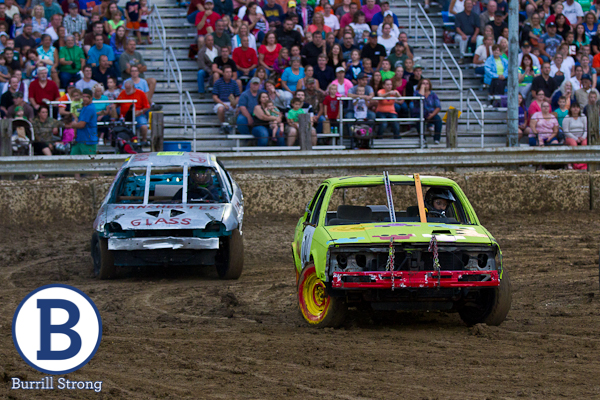
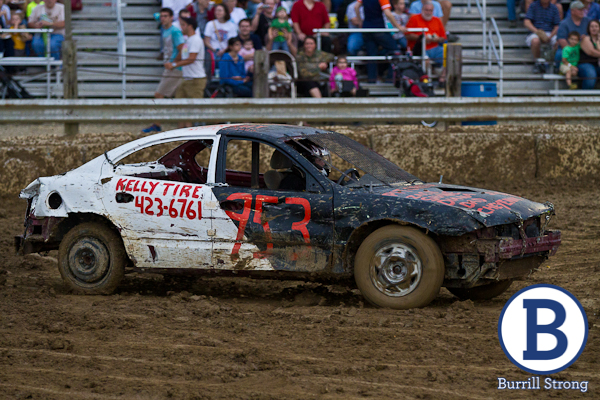
It was difficult to figure out the makes and models of some of the cars, but one was immediately obvious to me:
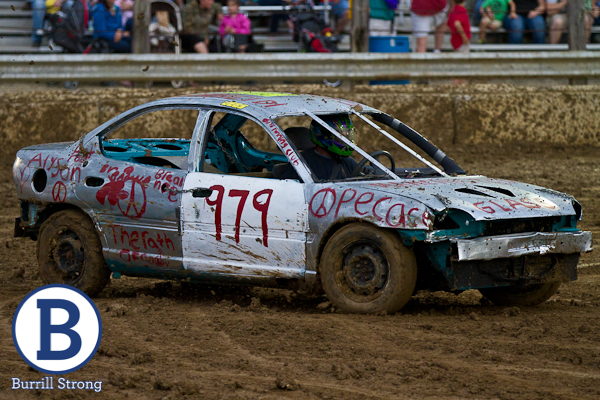
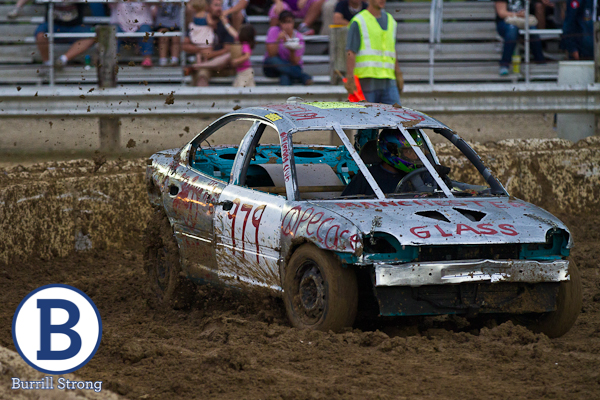
Do you know what that is? That’s an old Dodge Neon. It looks like one of the earlier models.
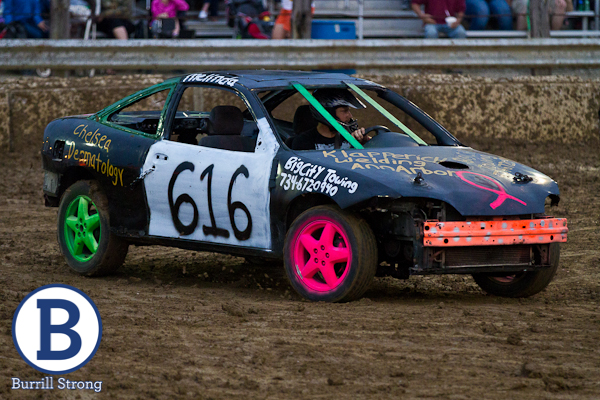
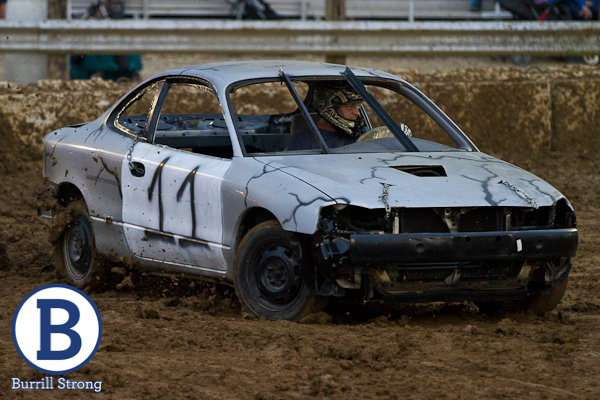
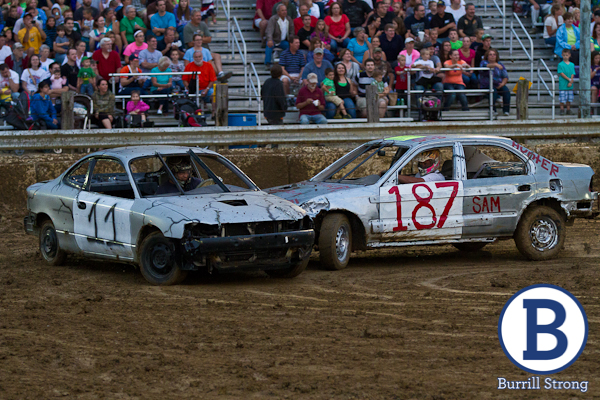
Some of you might look at the smoke coming out of this car, read the car’s number, and then chuckle:
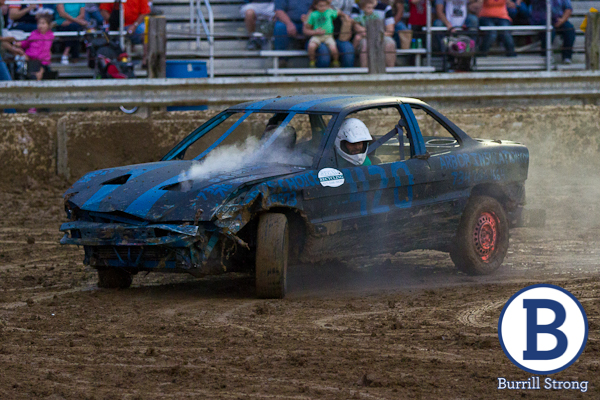
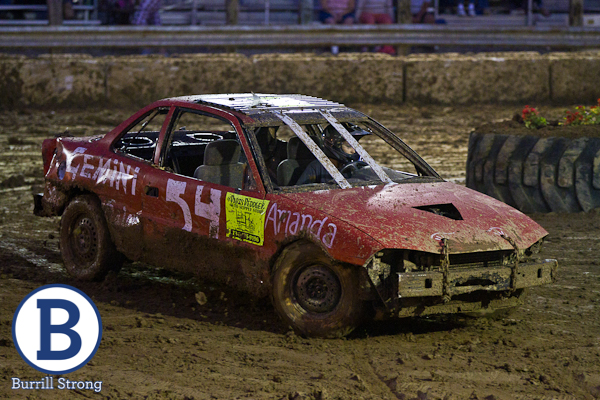
This driver pushed this old Saturn as hard as possible, and it showed:
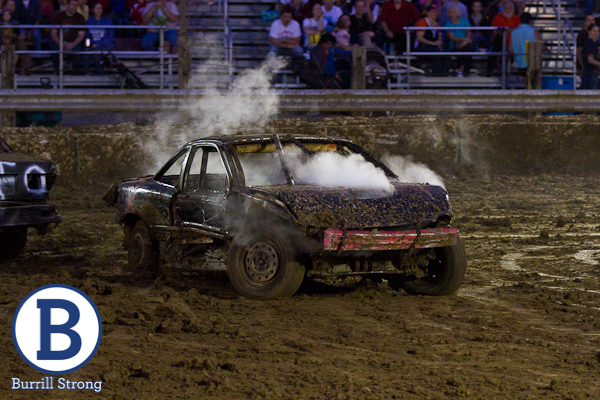
The Pac-Man car caught my eye:
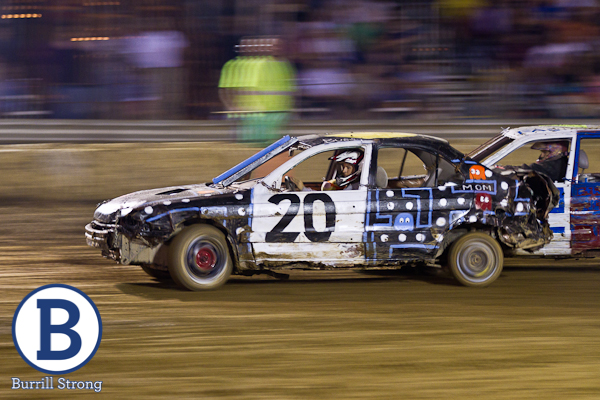
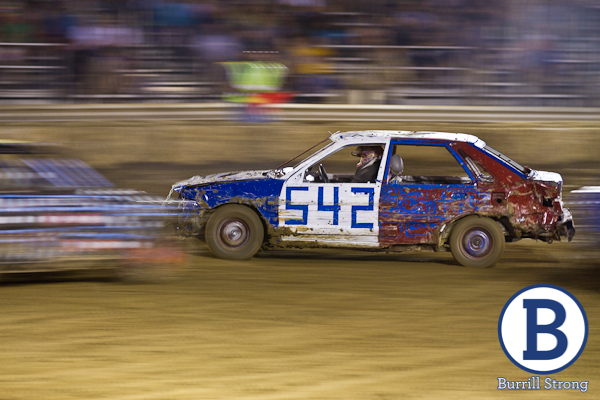
That’s it for the 2013 demolition derby photos, but stay tuned: there are more fair photos yet to come!

How does the start work? It seems like it would be crowded and starting position would determine finishing position.
They draw for starting position, and they run once around the track slowly single file — sort of like a caution lap — before starting in earnest. Starting position doesn’t necessarily determine finishing position, though, because it doesn’t take much of a nudge from behind on a turn to spin out a car. Sometimes the lead car stays out of the fray, but it seemed like more often than not it got pretty crazy.
Also, IIRC there were only six cars in each heat, so there was enough space for an entertaining race.
It’s much easier to understand when you put it that way!
That’s an ingenious way of thinking about it.